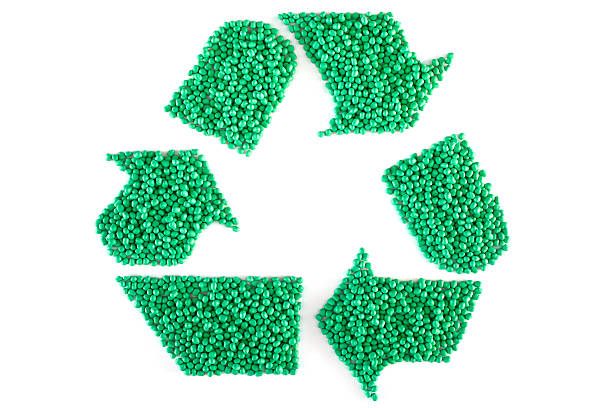Unlock your product's potential with our One-stop solutions!
+86-755-83222882

GET QUOTE
How Does Over Molding Work?
When it comes to the world of manufacturing, few techniques stand out as much as over molding and injection molding. These innovative processes have revolutionized the production of plastic parts, allowing for enhanced functionality, aesthetics, and durability. But how does over molding work, and what makes it such a vital technique in modern manufacturing? In this blog, we'll delve into the intricacies of over molding, explore its relationship with injection molding, and understand why it's such a game-changer for various industries.
Understanding Over Molding
What is Over Molding?
Over molding is a specialized manufacturing process where two or more materials are combined to create a single, integrated product. Typically, this involves molding a soft, flexible material over a rigid substrate. The result is a product that benefits from the properties of both materials, such as improved grip, enhanced durability, and added aesthetic appeal.
The Role of Injection Molding in Over Molding
Injection molding is a crucial part of the over molding process. In fact, over molding often starts with a standard injection molding procedure, where a rigid thermoplastic is injected into a mold to create the substrate or base part. Once this base part is formed, it is placed into an over molding tool, where the second material, usually a softer elastomer, is molded over it.
The Over Molding Process
Step-by-Step Guide to Over Molding
Over molding is a sophisticated manufacturing process that seamlessly integrates multiple materials into a single product, enhancing its functionality and aesthetics. Here’s a detailed look at how over molding works:
- Design and Material Selection: The first crucial step in over molding involves meticulous design planning and material selection. Engineers must carefully consider the desired properties of the final product and choose materials that complement each other. The base material, typically a rigid thermoplastic, is selected for its structural integrity and compatibility with the over molding material.
- Creating the Substrate: Using injection molding technology, the chosen base material is injected into a mold to form the initial substrate or core component of the part. This substrate serves as the foundation onto which the over molding material will be applied.
- Preparation for Over Molding: Before over molding can commence, the substrate undergoes a thorough cleaning and preparation process. This step is critical to remove any contaminants or residues that could compromise the adhesion between the base material and the over molding material. Proper surface preparation ensures a strong bond and improves the overall quality of the finished product.
- Over Molding: Once the substrate is clean and prepared, it is placed into an over molding tool. In this tool, the second material, often a flexible elastomer or thermoplastic elastomer (TPE), is injected over the substrate. The over molding material is carefully distributed to cover specific areas of the substrate, such as handles or grip surfaces, where additional properties like softness, grip enhancement, or impact resistance are required.
- Cooling and Ejection: After the over molding material has been injected and has adequately bonded with the substrate, the entire mold assembly undergoes a cooling process. This cooling phase solidifies the materials and sets the final shape of the part. Once cooled, the mold opens, and the newly formed over molded part is ejected from the mold cavity. The result is a finished product that seamlessly combines the structural integrity of the base material with the functional benefits provided by the over molding material.
Mastering the intricacies of the over molding process requires expertise in material science, mold design, and precise manufacturing techniques. By leveraging the capabilities of over molding, manufacturers can create products that not only meet but exceed the expectations of today’s demanding markets.
Benefits of Over Molding
Enhanced Product Performance
One of the primary advantages of over molding is the ability to enhance the performance of the product. By combining different materials, manufacturers can produce parts that offer superior grip, better wear resistance, and enhanced durability.
Improved Aesthetics
Over molding allows for the incorporation of different colors and textures into a single part, significantly improving its aesthetic appeal. This is particularly beneficial in consumer products where appearance plays a crucial role in purchasing decisions.
Cost-Effective Production
Despite the complexity of the process, over molding can be cost-effective. It allows for the creation of multi-material parts in a single production cycle, reducing the need for additional assembly steps and lowering overall production costs.
Applications of Over Molding
Consumer Electronics
In the world of consumer electronics, over molding is commonly used to produce components with enhanced tactile properties and durability. For example, smartphone cases and wearable devices often feature over molded parts to provide a better grip and protection.
Automotive Industry
The automotive industry heavily relies on over molding to produce various parts, from interior components to engine parts. Over molding helps in creating parts that are both functional and aesthetically pleasing, meeting the high standards required in the automotive sector.
Medical Devices
In the medical field, over molding is used to manufacture devices that require a combination of hard and soft materials. This includes surgical instruments, handles, and grips that need to be comfortable for prolonged use while maintaining sterility and durability.
Challenges in Over Molding
Material Compatibility
One of the biggest challenges in over molding is ensuring material compatibility. The base and over molding materials must bond effectively to avoid issues such as delamination or poor adhesion.
Design Complexity
Over molding adds an additional layer of complexity to the design process. Engineers must carefully consider how the different materials will interact and ensure that the mold design facilitates proper material flow and bonding.
Process Control
Maintaining precise control over the molding process is essential to produce high-quality over molded parts. This includes monitoring temperatures, injection pressures, and cooling times to ensure that both materials bond correctly and the part meets all specifications.
Future Trends in Over Molding
Advanced Materials
The future of over molding looks promising with the development of advanced materials. Innovations in thermoplastics and elastomers are enabling the creation of parts with even better performance characteristics and broader application possibilities.
Automation and Precision
As with many manufacturing processes, the trend towards automation is impacting over molding. Advanced robotics and precision molding techniques are enhancing the efficiency and accuracy of the process, leading to higher quality products and reduced production times.
Sustainable Practices
Sustainability is becoming increasingly important in manufacturing. Over molding processes are being adapted to use more eco-friendly materials and reduce waste, aligning with global efforts to promote sustainable production practices.
Conclusion
Over molding, in conjunction with injection molding, represents a pivotal advancement in manufacturing technology, offering unparalleled versatility and functionality in product design. By seamlessly integrating multiple materials, this process enhances product performance, improves aesthetics, and optimizes production efficiency.
At SZOMK, we specialize in leveraging over molding techniques to empower our clients with innovative solutions. Our expertise in material selection, mold design, and manufacturing processes ensures that every product meets the highest standards of quality and durability. Explore the possibilities of over molding with SZOMK today and discover how our commitment to excellence can elevate your next project. Contact SZOMK to learn more about our capabilities and how we can assist you in bringing your ideas to life with precision and expertise.


